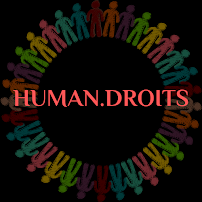This follow-up piece aims at illuminating and providing answers to these questions along with discussing the history, nature, and criticisms of this 74-year-old Declaration.
Origin and development of human rights
The origin of human rights can be traced back to 539 B.C. when the rights were entitled only to the members of a group or family. In 539 B.C., the Persian king Cyrus conquered the city of Babylon (in present-day Iraq) and declared racial equality, the right to freedom for the slaves, and the right to religion for every person. This marked the beginning of the concept of universal human rights. The decrees by King Cyrus were recorded on baked clay and this is known as the 'world's first charter of human rights'. Other documents that shaped human rights law include the Magna Carta, 1215, The Petition of Rights, 1628, the US Declaration of Independence, 1776, The Declaration of the Rights of Man and of the Citizen, 1789, and UDHR, 1948.
In response to the barbarous and heinous crimes on a massive scale in World War II, the prominent leaders decided to draft a universal document containing the rights and freedoms available to a person for being a human being.
On 26 June 1945, UN Charter was signed for the promotion of international peace and security and in order to 'complement' the UN Charter, the idea of constituting UDHR came into being. The draft of the UDHR was discussed in the year 1946 at the time of the first session of the General Assembly. It is interesting to note that UDHR is the result of the drafting of not just one but multiple bodies which include the General Assembly, the Drafting Committee, the Commission of Human Rights, and the Economic and Social Council. The Commission on Human Rights, chaired by Eleanor Roosevelt, consisted of 18 members, and the first draft of UDHR was prepared by René Cassin. When the final draft was completed, it was handed over to the Commission on Human Rights in Geneva and it was called the 'Geneva Draft'. It was sent to the UN member states for their comments. The whole process of preparing the draft of the UDHR took less than 20 years.
How does UDHR work?
Article 25 of the UN Charter reads,
"The Members of the United Nations agree to accept and carry out the decisions of the Security Council in accordance with the present Charter". UN Security Council passes resolutions for human rights abuses and it is through this body that the provisions of UDHR are applied in the international arena. Additionally, the Human Rights Committee has been established under the
ICCPR which examines the reports of countries and tackles the issue of human rights violations. Thus, UDHR works in consonance with ICCPR and
ICESCR.
Why is UDHR considered ineffective?
This 30-Articles Declaration is criticised on many grounds, primarily for being a weakling as it is a 'Declaration' and not a 'Treaty' and hence, is non-binding. The nature of UDHR is considered its major drawback, since many countries show their reluctance while providing the fundamental rights that UDHR contains, citing reasons such as religious and ethnic sensitivities of their territories.
Secondly, it is not accepted as an instrument of global consent and is regarded to be of a western perspective. This is because the model draft was prepared by leaders belonging to more civilised and developed nations, leading to the emergence of debate around its 'generic and universal' character.
Thirdly, the Declaration does not provide answers to specific questions of interpretation as the contents or definitions of most of the terms are oftentimes contested, thereby creating obstacles in taking decisions in the courts or on other matters of international importance. Fourthly, the Declaration seems insufficient in covering every aspect of human rights, especially civil and political rights and freedoms. For example, it does not lay the required emphasis on certain rights such as the right to seek asylum.
The Way Forward
UDHR was the first document through which the seeds for EQUALITY AND FREEDOM, regardless of religion, race, caste, and sex, were sown on a global scale. There are 193 member states of the United Nations and UDHR is binding on them. Apart from serving as one of the grounds on which the arguments are based in the International Court of Justice and domestic courts, this instrument is a sanctum of universal human rights. Moreover, multifarious countries have adopted the provisions of UDHR in their national constitutions. Thus, a number of jurists and international lawyers give it the status of customary international law. Furthermore, it has also influenced the formulation of various other international instruments such as ICCPR and ICESCR, which together with UDHR form the International Bill of Human Rights. Consequently, this has nullified the drawback of UDHR which considered it to be insufficient for not giving the requisite attention to every human right.
The major criticism of UDHR for being a 'soft law' makes it one of the significant instruments of international human rights law as time and again it has acted as a base or trigger for various domestic as well as international justice machinery and legislatures. Undeniably, reforms are required in international human rights mechanisms on various levels but taking into account the motive and spirit of UDHR, it cannot be undermined for being 'inoperative' as history reflects the innumerable instances where the provisions of UDHR were invoked successfully. In a nutshell, this mother-law has backed the 'hard laws' (the binding laws) for 74 years now and has proved to be a victory on several levels.
References
https://www.un.org/en/about-us/udhr/history-of-the-declaration
https://www.un.org/en/about-us/history-of-the-un/preparatory-years#:~:text=The%20UN%20Charter%20was%20signed,UN's%20original%2051%20Member%20States.
https://www.unitedforhumanrights.in/what-are-human-rights/brief-history/











%20in%20Myanmar.%20The%20image%20features%20a%20resilient%20woman%20standing%20firm%20in.webp)



0 comments:
Post a Comment